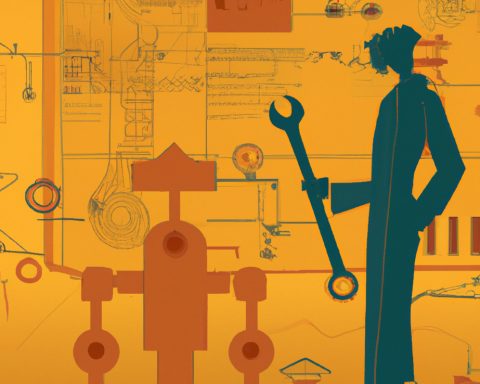The origins of an unprecedented crisis in employment and wages
The oil crisis of 1974, which rebounded in 1978-80 with the Iranian revolution, brought the Glorious Thirty and their economic model to a close. The latter rested on three pillars: cheap energy and raw materials, a combination of abundant common labour from rural-urban migration and relatively scarce skilled labour, and finally Fordism, i.e. the mass production of consumer durables of which the automobile was the symbol.
Earnings growth was contained within the limits of productivity growth (Keynesianism) and the employment model was dominated by full-time employment with social protection (so-called "social protection").Beveridgian State), the macroeconomic balance being ensured by a steady increase in the purchasing power of the middle classes.
This fortunate combination has resulted in thirty years of full employment. However, with the gradual opening up of economies (what was to become globalisation), the arrival of the baby boomers on the labour market, the sharp rise in fossil fuels and raw materials and in labour costs (double-digit inflation), this model eroded, productivity slowed and chronic unemployment set in.
It also corresponded to the famous Club of Rome report on the limits of growth (1972) which introduced an awareness of the damage of industrial progress to the environment. The crisis was no longer a short cyclical passage. It has taken hold.
States have found it increasingly difficult to ensure strong growth over the long term, as social protection systems have been affected by the reduction in contributions induced by unemployment. Investment has turned to the periphery, quickly followed by a productive relocation of heavy industries (steel, shipbuilding), light industries (textiles) with a high labour content. However, this decline in the manufacturing sector, which saw the share of industry in GDP fall from 30-25 % to 20-15 %, was long offset by job creation in particularly financial services (banking, insurance).
Soft growth despite electronics and finance
It was long believed that growth would be driven by electronics and computers. But these new industries were very quickly globalized and the productivity gains they were supposed to bring to the economy as a whole, and thus to employment, did not materialize, so Robert Solow of MIT (1987 Nobel Prize) could wonder what had happened to the effect of computers in the economy.
The years 1980-2015 saw a very rapid transfer of factories to the small dragons (Korea, Taiwan, Malaysia, Singapore) and then to the very fast-growing countries of the former Third World (the BRICS: Brazil, Russia, China, India, South Africa). The financialisation of production is accelerated by a floating exchange rate regime and a financial market that sets interest rates.
The crisis of 2008. Insee
Recurrent financial crises 1997, 2001, 2008 increase uncertainty and feed the financial products market (forward purchases which form the derivatives market, guarantees against exchange rate risk, securitization of household and government debt).
In 2015 the amount of financial transactions was 10 times that of GDP ($700 trillion versus $70 trillion) without full employment being restored in developed countries. The US performance owes much to the renewed low price of a new form of fossil energy (shale gas and bituminous oils); in terms of employment it is largely an optical illusion. If we take into account the withdrawal of a large number of women from the labour market, which results in an overall activity rate in the United States (men and women) of 60 % compared to 88 % in France, the unemployment rate is more than 9 %.
Employment situation in France.
Bipolarization of wages
The quality of jobs (low qualifications, precarious employment contracts) is also a weak point in this sluggish and hesitant growth. There is also a growing inequality between well-protected high wages and low wages. For example, in France (which is not the most "unequal" European country) a quarter of the workforce is now at the minimum wage (minimum wage). In 1968, the population employed at the minimum wage (the SMIG) was only 10 to 15 %. In the United States today, 30 % of jobs are self-employed, a saving in labour costs estimated at 30 %.
This wage bipolarisation (an asymmetrical hourglass with a very small upper part) accompanies and reinforces disparities in status, and when it is proposed to unify statuses: a single employment contract instead of the permanent contract/fixed-term contract polarity, the model towards which we are tending joins the income distribution: with an explosion in the pay of the most favoured 1 %, growing heterogeneity in the first decile, and a worsening of the situation in the last two or even three deciles.
The situation is reaching a breaking point: will classic salaried employment (permanent contract) soon be a privilege reserved for a minority of the population?
Unemployment rate in France
Unemployment rate in France. Coe-Rexecode
With the first wave of digital technology affecting logistics, the spatial reorganization of production has allowed segmentation of the value chain and relocation: blue-collar employment in the north has been the main affected.
Neither in Japan nor in Europe has growth managed to pick up; the IMF has stressed the disappointing nature of the global recovery, which everywhere is struggling in deflationary scenarios (falling prices, stalled growth, high unemployment). Had it not been for the monetary policy of overabundant liquidity conducted by the central banks of the major countries (quantitative easing), we might have wondered whether we would not have entered into a depression in the manner of the 1930s. What would have happened?
The digital transformation, a new and 4th industrial revolution?
The growth and jobs crisis now stretches over 40 years and does not seem to be solvable in the short term. In this sense, it resembles neither the Great Depression of 1929 to 1940, nor the great stagnation of 1873 to 1893. The only period in the history of capitalism that resembles it is the one that accompanied the industrial revolution from 1780 to 1850, which saw the birth of the steam engine, the railway, the great factory and then electricity.
The long employment crisis that gave birth to the forceps of industrial capitalism struck R.T. Malthus, J.B. Say, D. Ricardo and Marx. David Ricardo leaned for a moment towards Say's Law of Opportunity, which concluded that the destruction of jobs in the textile industry caused by automatic weaving machines would be compensated by large-scale industry (mining, iron and steel, railway construction).

He explained that "technological" unemployment could have been reduced if and only if the distribution of income from production had been flexible on both sides; on the side of wages as well as profits. But profits refused to adjust downwards and the adjustment was made only on the real wage and unemployment. John Hicks in his History of Economic Thought notes that unemployment lasted an extremely long time, that the Speenhamland scheme was not repealed until 1836, that the wages and living conditions of the workers were very harsh (which feeds the thesis of Marx and Engels of the absolute impoverishment of the working class).
The interminable nature of the crisis and the very low employment content of the new economy (digital, green, post-industrial, information society, cognitive capitalism) are reminiscent of the Ricardian case. More and more economists (Jeremy Rifkin in particular) are now talking about a new industrial revolution.
Better still, the correction made by David Ricardo to his model applies well here: despite the power of the financial crisis of 2008, there has been no reduction in the share of profits, no massive ruin of the rich; on the contrary, despite unanimous declarations from both right and left calling for a "moralization of capitalism" of profits, shareholder value guides corporate strategies more than ever and attempts to control market finance come up against the concern to do nothing that could jeopardize job creation.
The result is in line with what Ricardo predicted: it is on the level of wages and the volume of employment that the adjustment to the very large-scale technological revolution we are facing is taking place.
Sharing of value added between wages and profits.
Seven years after the 2008 crisis, financial profits have shown a very strong resilience that feeds a growing inequality of which we have seen the various manifestations.
During the 1930s, the New Deal had been the signal in the United States of a very active redistribution policy, which, as Thomas Piketty showed, lasted until the Reagan years. Why in forty years of crisis has no New Deal or revolution occurred so far?
Probably for three complementary reasons:
1) The private financial system has not collapsed, the States and then the central banks have avoided a general solvency crisis;
2) The adjustments demanded from employees were less severe because of the "social shock absorbers" provided by the welfare state and unemployment affected categories that are peripheral to the core of the workforce (the young and the old);
3) The 1930s witnessed a managerial revolution in companies and an institutional revolution (the insertion of trade unions in the mechanisms of governance) but they did not experience a technological revolution capable of putting workers and their unions and the middle classes completely on the defensive as is the case today.
















